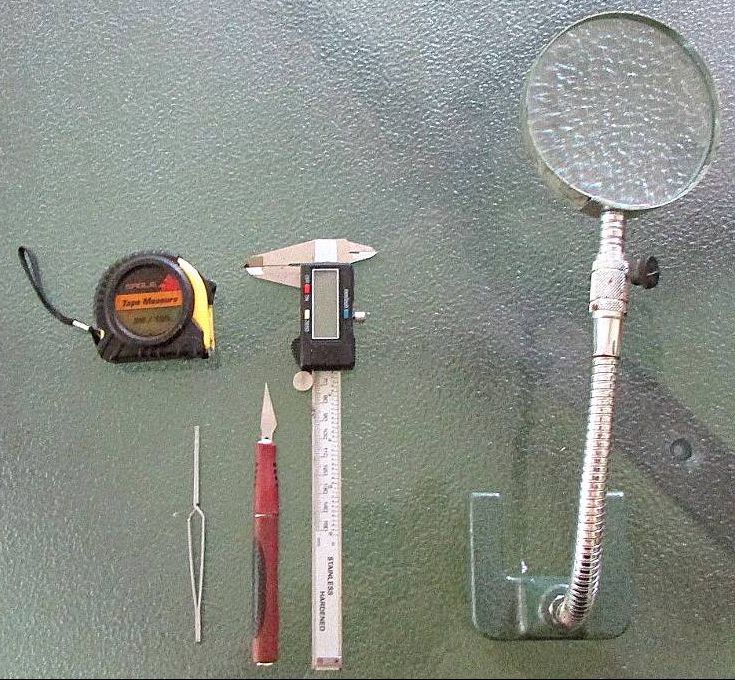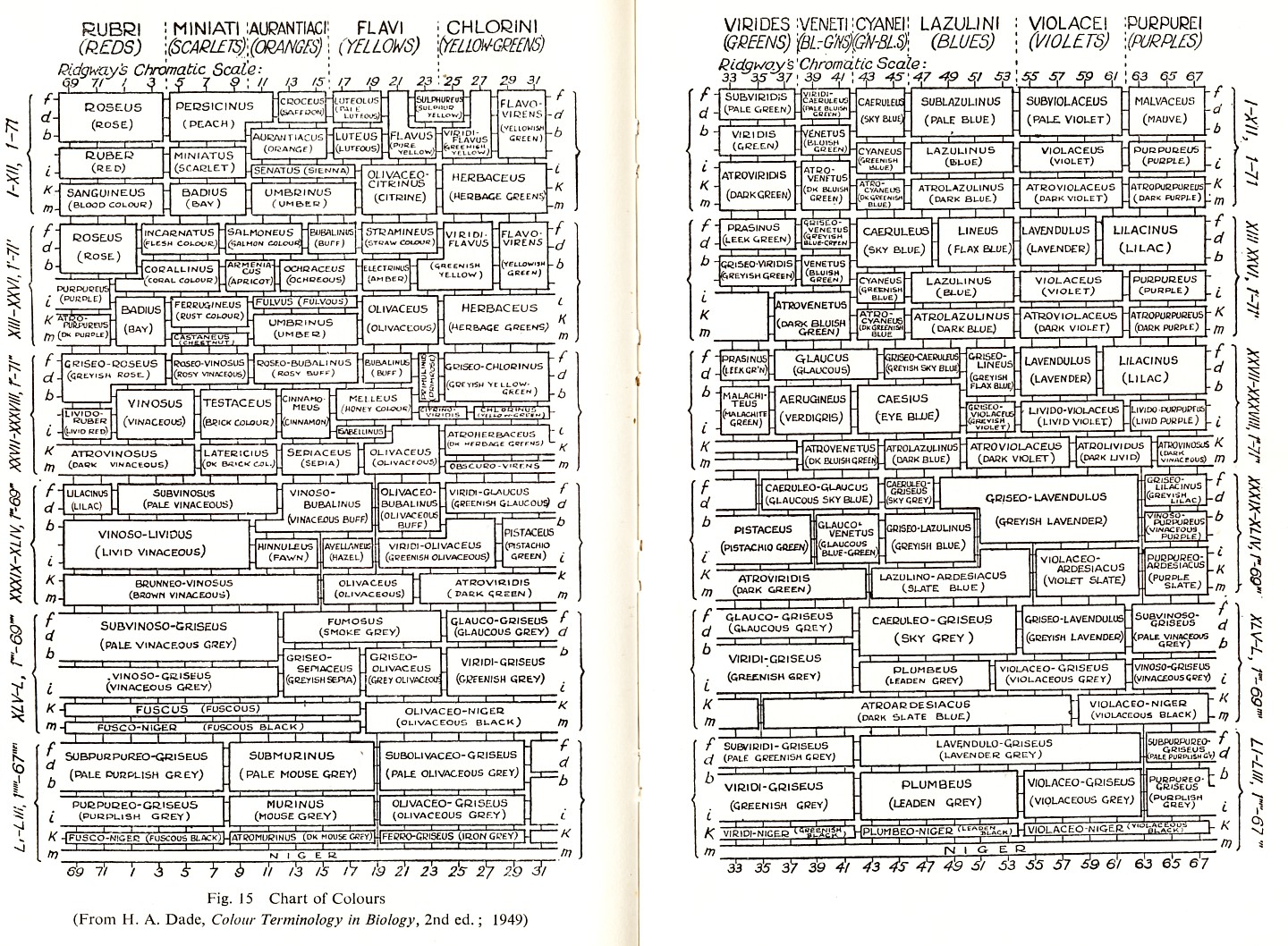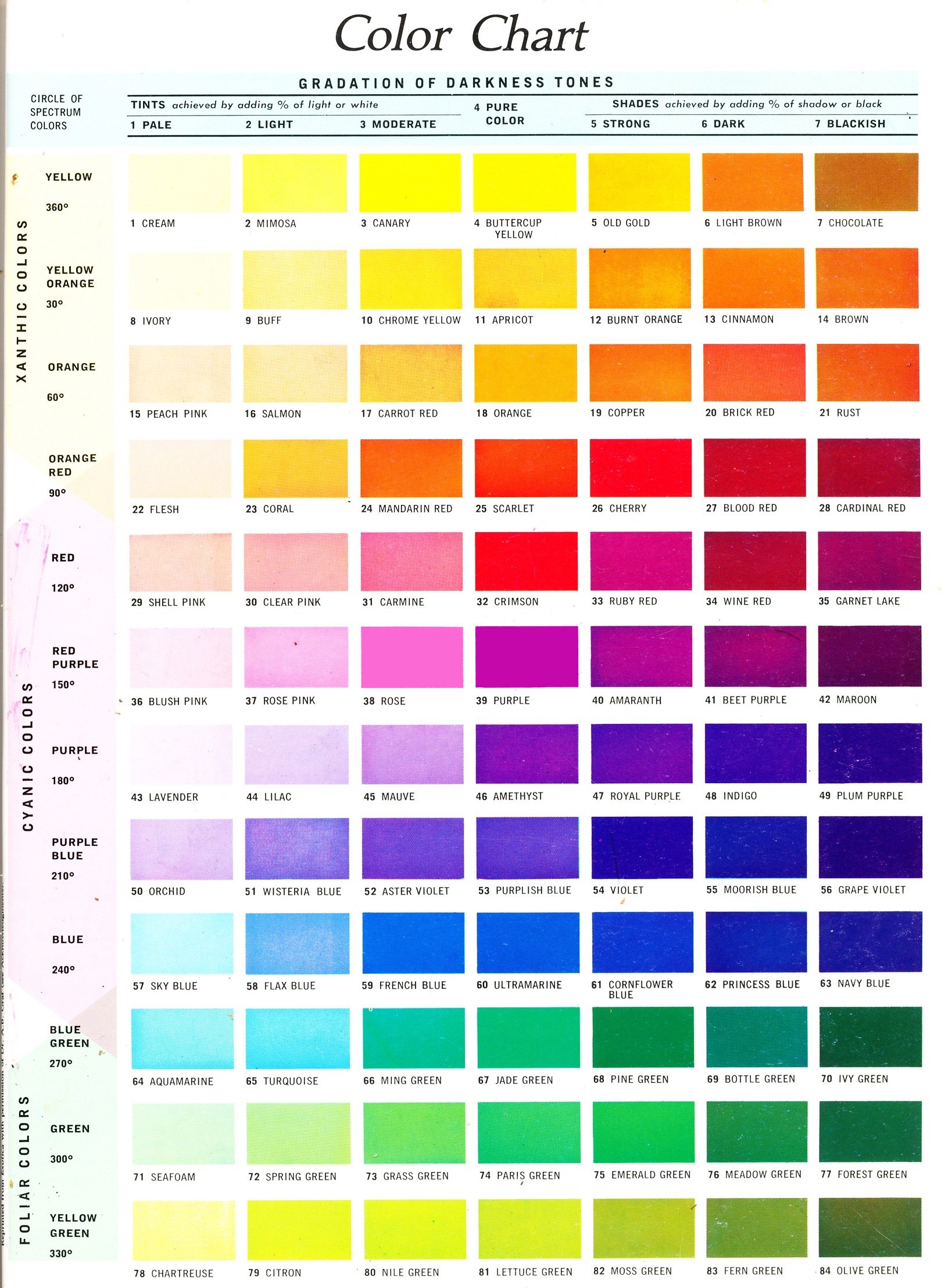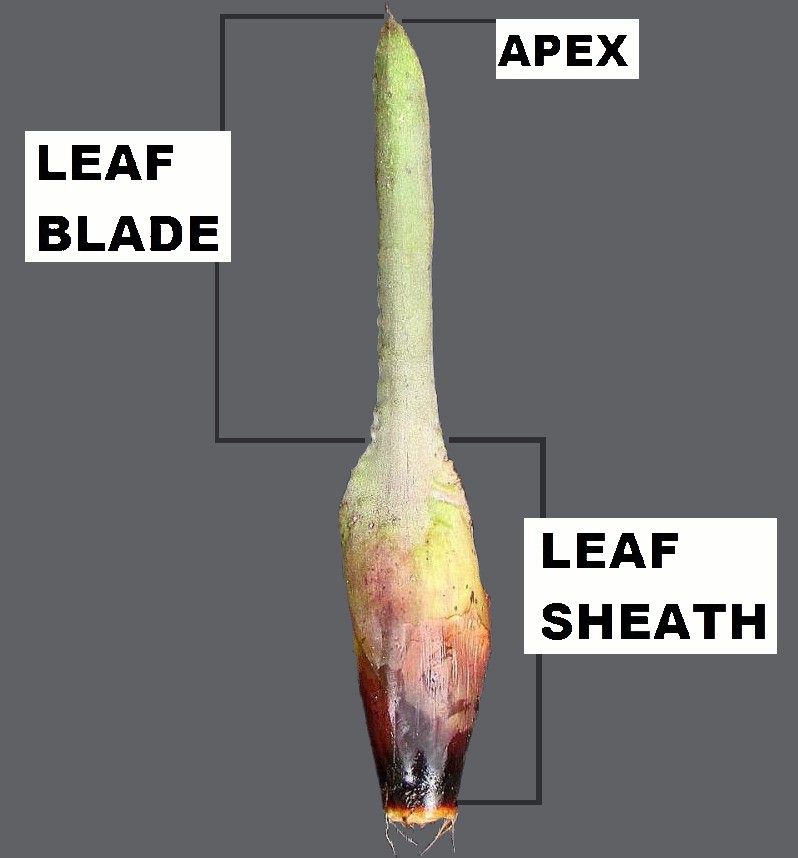
The concept of these articles, and a great many of them, are from "UD", "Uncle Derek", aka "The Hybrid Detective", so he deserves an introduction...
Derek Butcher, of Adelaide, Australia, has spent more than 20 years as a self professed "pseudobotanist," working to unravel the intricacies of Bromeliacae. He is well known in Australia for his book, "An Amateur's Guide to the Greyish Leaved TILLANDSIOIDEAE" to help interpret his favorite genus, and his checklist to keep order in the hybrids produced in his country. He is the first Australian to have a Bromeliad species named after him - Puya butcheriana. He also maintains the most comprehensive list of Bromeliad genera names, changes, and synonyms, stretching back to pre-Linnaeus ! (Link = TaxonList maintained in Netherlands). For almost 100 years, Derek operated the "Cultivar Register" for the Bromeliad Society International (BSI) and loves nothing better than the challenge of piecing together "the story" behind any Bromeliad. On these pages he shares with us some of his "cases" relevant to Australian Hybrids. (2008 - Derek has now also volunteered for the "Committee for Endangered Bromeliads in Central America".)
Other learned authors will be added as articles become available.
|
2005 Detective Derek 02/05: Neoregelia Kent’s Blue. Lost Hybrid Neoregelia Fairy Dust. DD 06/05: Vriesea Elfi. DD 07/05: Vriesea Jeanie's Feather. (See also DD0906) DD 08/05: Billbergia Collevii. DD 09/05: Aechmea Lalinda. DD 10/05: Tillandsia tectorum Enano. DD 11/05: Hechtia tillandsioides. DD 11/05b: Aechmea organensis, (Coral Beauty, Graceful/gracilis). DD 11/05c: The Golden Oldies. DD 12/05: Neoregelia Princess Caroline. |
2006 DD 05/06: Tillandsia Laurie. Natural hybrid of brachycaulos x schiedeana. DD 06/06: Neoregelia lilliputiana, ampullacea, Lillipet and Night Spot. DD 06/06b: Plant Labelling, Aechmea Stefanie. DD 09/06: More of Vriesea Jeanie's Feather. DD 10/06: Neoregelia The Rose = Lokelani. DD 10/06b: Encholirium magalhaesii / subsecundum by Len Colgan.(& correction) DD 12/06: Canistropsis seidelii var. welteri DD 12/06b: Neoregelia Red Waif / Cayenne Philately Broms on Stamps. |
|
2007 DD 01/07: Neoregelia ‘Oeser’s Nova’ DD 01/07b: Neoregelia ‘Bill Morris’ DD 01/07c: Neoregelia concentrica and ‘Ferris’ DD 01/07d: Neoregelia laevis / simulans DD 03/07: Vriesea morrenii DD 05/07: Fosterella latifolia / villosula DD 06/07: Ae. Que Sera DD 07/07: Vr. flammea versus poenulata. |
2008 DD 02/08: N. carcharodon now Blue Shark. DD 02/08b: Billbergia, Quesnelia, xBillnelia, or Aechmea Pinegrove Lass DD 03/08: Neoregelia uleana now Yuletide DD 05/08: Ae. triticina to guarapariensis to roberto-seidelii DD 06/08: N. princeps DD 07/08: International Bromeliad Cultivar Register DD 10/08: Tillandsia Natural hybrids. Derek Butcher (See also EG 02/20: Eric Gouda) |
|
2009 DD 02/09: Bill. Purple Haze & Pink Piglet. DD 03/09: Vr. Snow-White. DD 05/09: Down with formula ! DD 06/09: Edmundoa ‘Alvim Seidel’ DD 07/09: Ae. Polyantha DD 07/09b: T. sagasteguii DD 08/09: T.mooreana, kalmbacheri, cretacea, inflata. DD 08/09b: What is a Mule ? DD 09/09: A voyage of discovery. T. balbisiana as havanensis. DD 10/09: Portea petropolitana var. Extensa. DD 10/09b: Aechmea caudata take 3 ! DD 11/09: Neoregelia sapiatibensis. DD 12/09: Tillandsia Hal’s Nidus. DD 12/09b: Bromelia balansae in Australia. DD 12/09c: Fosterella in Australia. DD 12/09d: Vriesea ‘Goldfinger’. |
2010 DD 02/10: Tillandsia ‘Scurfy’. DD 02/10: Tillandsia ‘Uluru’. DD 07/10: Billbergia ‘Leodiensis’ & ‘Elvenia Slosson’. DD 10/10: Vriesea Ginoti. DD 11/10: Tillandsia Silver Candelabra. DD 12/10: Tillandsia Victoria. |
|
2011 DD 03/11: Neoregelia Panama. DD 03/11b: Neoregelia Big Bands. DD 04/11: Neoregelia Fallan. DD 05/11: Tillandsia ‘kaoldii’ or is it 'kolbii' ? DD 06/11: Neoregelia Red of Rio DD 07/11: Tillandsia ‘Hondurensis' DD 08/11: Herbaria discoveries DD 09/11: Alcantarea ‘Landsendt Blue Grey' DD 11/11: Vriesea ‘Royal Hawaiian' DD 11/11b: Ae. gamosepala group DD 12/11: Is B. brasiliensis a hybrid ? DD 12/11b: The Shy Tillandsia |
2012 DD 01/12: Quesnelia ‘Red Face' DD 01/12b: Tillandsia ‘Silver Berger' DD 01/12c: Tillandsia ‘Chalky White' (and subsequent challenge? to registration) DD 02/12: xNeophytum ‘Lymanii', Ian Hook DD 03/12: Neoregelia spectabilis & Variegated (Jaffa) DD 03/12b: T. lineatispica or T. fasciculata ‘Fingers’ DD 03/12c: xQuesmea ‘Marj’ versus Ae. fraseri DD 03/12d: Dyckia ‘Rabbit Warren Group’ DD 04/12: Vr. ‘Highway Beauty’, ‘RoRo’, ‘Shiraz’ and other combinations. DD 05/12: Nid. ‘Red Queen’/‘Nat DeLeon’. DD 05/12b: Deuterocohnia ‘Little Marj’ DD 09/12: Tillandsia schiedeana Colour? 11/12: Photosynthesis by Don Beard DD 11/12 & 04/13: Nid. longiflorum or Nid. innocentii ? DD 08/05: UPDATE Billbergia Collevii. |
|
2013 DD 01/13: Neo. Bullis's Margaret DD 02/13: Vriesea Gemma Gold DD 03/13: Puya Moray DD 04/13 & 11/12: Nid. innocentii versus Nid. longiflorum DD 07/13: Pit. inermis DD 08/13: T. Moonlight DD 10/13: Billbergia Windigig Special and comparison with B. buchholtzii No. 1 and with B. nana DD 11/13: Tillandsia capitata 'Peach' & 'Guatemalan Peach' DD 11/13b: Billbergia ‘Chas Webb’/‘Breauteana’ DD 11/13c: Puya butcheriana Detective Ian: The story behind some names. |
2014 DD 01/14: Puya berteroniana DD 02/14: Grandfathering in - Australian bigenerics. DD 03/14: Most Ananas are Cultivars. 02/14: Key to Tillandsia Diaphoranthema DD 05/08: Ae. triticina to guarapariensis to roberto-seidelii UPDATE 02/14 - "and back to guarapariensis" Ae. callichroma by Peter Franklin 1994 DD 10/13: Billbergia Windigig Special and comparison with B. buchholtzii No. 1 and with B. nana - 2014 update. DD 07/14: Deuterocohnia brevifolia ssp. chlorantha now c.v. 'Chlorantha' DD 08/14: Edmundoa lindenii that nearly was Edmundoa fragrans DD 12/14: Tillandsia ‘Evita Plus’. DD 10/14: Billbergia ‘Beaut Ruby’. |
|
2015 DD 01/15: Neoregelia ‘Wild in Oz’. DD 02/15: Tillandsia ‘Pochutla’. DD 08/14: Edmundoa lindenii update. DD 05/15: xCryptbergia should be xBiltanthus DD 06/15: Beginners Guide to Names DD07/15: Tillandsia capillaris DD 09/15: Tillandsia "Chooks". DD 08/11: Herbaria discoveries DBSA 08/15: Tillandsia Rust |
2016/2017 DD 01/17: Holm’s Tillandsia hybrids. DD 02/17b: Neoregelia ‘Skotak's Orange Crush’ DD 11/13b: Billbergia ‘Chas Webb’/‘Breauteana’ update DD 02/17: DNA / New species & Cultivars DD 03/17: Taxonomy for Beginners DD 06/17: T. ‘Cocoensis’ and ‘Moraisensis’ DD 06/17b: Ae. fasciata article |
|
2018/2019 DD 05/18: Edmundoa ‘ROSEA’ CL 02/19: A Matter of Energy - Chris Larson DD 03/19: Bromeliad roots - Lloyd Goodman DD 11/19: Tillandsia Revue 2019 |
2020 Link Ant-Plants, free e-book by Derrick Rowe DD 04/20: Source abbreviations on labels EG 02/20: Natural Hybrids of T. argentina & others previously published as species. DD 06/20: Encouraging root growth on Tillandsias. DD 08/20: Fragrant Tillandsia by Robert Reilly DD 10/20: Protogyny in Tillandsias DD 11/20a: Origin and Pronunciation of Bromeliad Genera Names DD 11/20b: CREATING A TILLANDSIA SCREEN DD 11/20c: HYBRIDISING GREY-LEAVED TILLANDSIAS |
|
2023 Detective Ian: Notes on Dyckia Special Isolation Treats - moved here from home page. 1 - A new *Indexed Journals* box has been added to home page. Covering BSA, Illawarra, and Far North Coast Newsletters. 2 - A stunning presentation to the 2020 Aust. Tillandsia Day by Hiro Takizawa. 3 - 'Gardening Australia' interview with Vic Przetocki *Click here* 4 - Bruce Dunstan's presentation growing Tillandsias in Australia to La Ballona Valley Bromeliad Society - YouTube. 5 - Peter Tristram's presentation "40 Years Growing Down Under" to La Ballona Valley Bromeliad Society Zoom meeting - YouTube. 6 - Tillandsias in Czech Republic (Jan Maruska). La Ballona Valley Bromeliad Society Zoom meeting - YouTube. 7 - Worthy read & eye candy 'EXOTICA ESOTERICA'
10/23 Eight Essays by David Benzig. |
2024 |
1. The “plant itself"

2. The Inflorescence
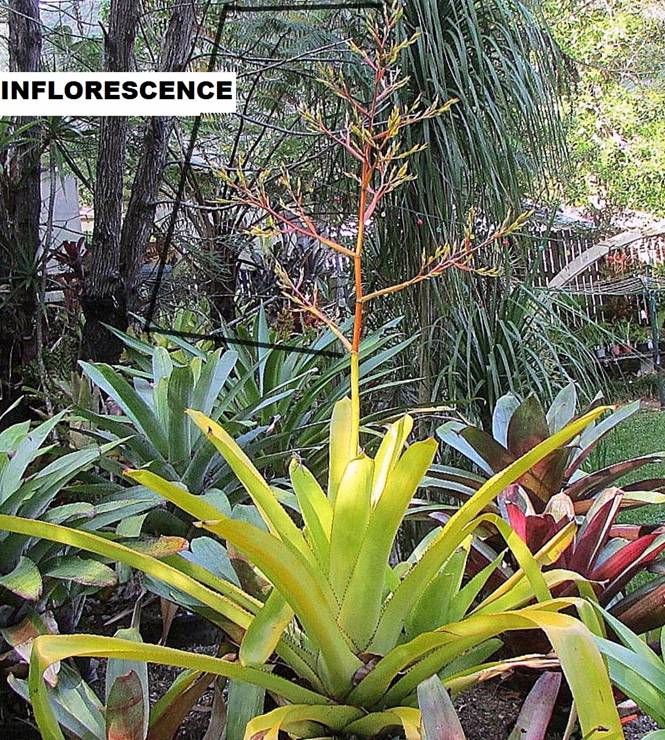
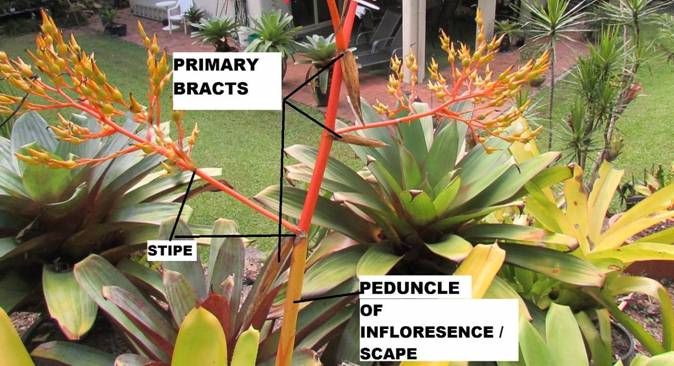
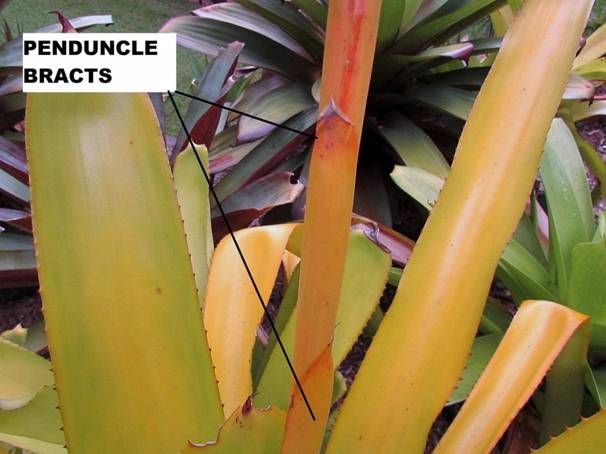
3. The Flower Itself
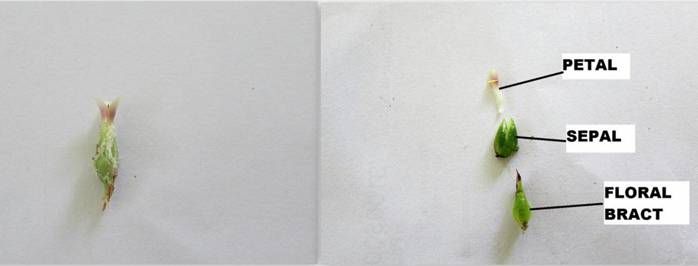
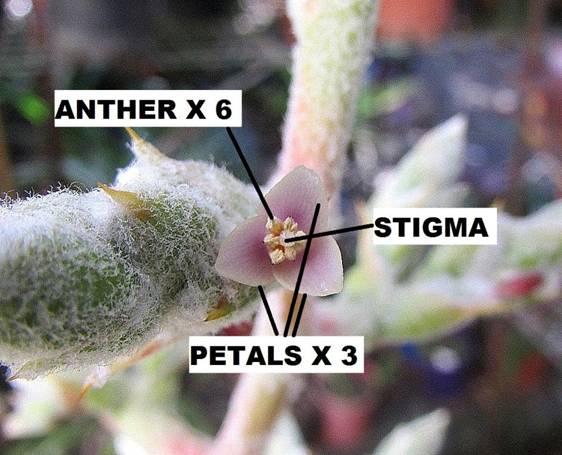
4. The Implements that I use.
